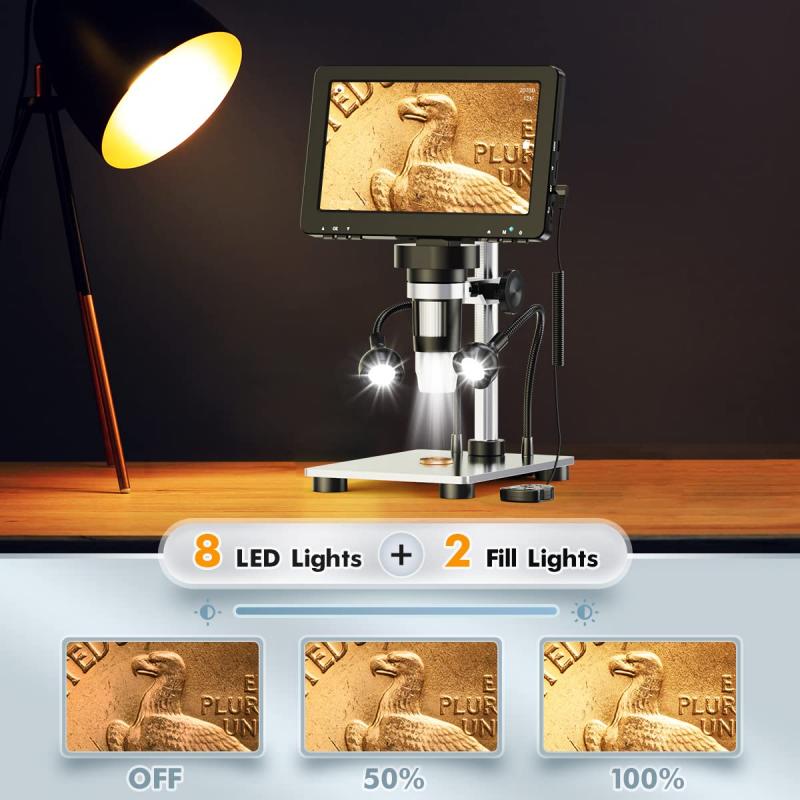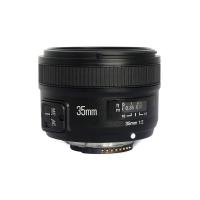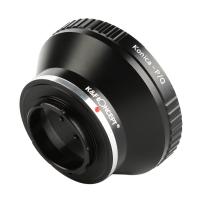Why Electron Microscope Is Better Than Light Microscope ?
Electron microscopes are better than light microscopes because they use a beam of electrons instead of light to magnify objects. Electrons have a much shorter wavelength than light, which allows for much higher resolution and greater magnification. This means that electron microscopes can see much smaller objects and details than light microscopes. Additionally, electron microscopes can be used to study the internal structure of cells and tissues, while light microscopes can only observe the surface. Electron microscopes also have the ability to produce 3D images of objects, which is not possible with light microscopes. Overall, electron microscopes are essential tools for scientists and researchers in many fields, including biology, materials science, and nanotechnology.
1、 Higher Magnification
Electron microscopes are better than light microscopes because they offer higher magnification. Electron microscopes use a beam of electrons instead of light to create an image, which allows for much higher magnification. This is because electrons have a much shorter wavelength than light, which means they can resolve much smaller details. In fact, electron microscopes can achieve magnifications of up to 10 million times, while light microscopes are limited to around 2000 times.
In addition to higher magnification, electron microscopes also offer better resolution. This means that they can distinguish between two closely spaced objects more easily than light microscopes. This is because the resolution of a microscope is determined by the wavelength of the radiation used to create the image. Since electrons have a much shorter wavelength than light, they can resolve much smaller details.
Another advantage of electron microscopes is that they can be used to study samples that are too thick or opaque for light microscopes. This is because electrons can penetrate through thicker samples without being absorbed or scattered, while light is absorbed or scattered by thicker samples.
Finally, the latest point of view is that electron microscopes are becoming more accessible and affordable, making them more widely available to researchers and scientists. This means that more discoveries can be made using electron microscopes, leading to a better understanding of the world around us.

2、 Higher Resolution
Electron microscopes are better than light microscopes because they offer higher resolution. The resolution of a microscope refers to its ability to distinguish between two closely spaced objects. Electron microscopes use a beam of electrons instead of light to create an image, which allows for much higher resolution. This is because electrons have a much shorter wavelength than light, which means they can resolve much smaller details.
In addition to higher resolution, electron microscopes also offer other advantages over light microscopes. For example, they can be used to study samples that are too thick or opaque for light to pass through. They can also be used to study samples at much higher magnifications, which allows for the observation of very small structures and details.
Recent advancements in electron microscopy have further improved its capabilities. For example, cryo-electron microscopy (cryo-EM) allows for the study of biological samples in their native state, without the need for staining or fixation. This has led to breakthroughs in the study of complex biological structures, such as viruses and proteins.
Overall, electron microscopes are better than light microscopes because they offer higher resolution and other advantages that make them more versatile and powerful tools for scientific research. As technology continues to advance, it is likely that electron microscopy will continue to play an increasingly important role in scientific discovery.

3、 Greater Depth of Field
Electron microscopes are better than light microscopes because they offer a greater depth of field. This means that they can produce images with a greater level of detail and clarity, allowing scientists to see smaller structures and features that would be impossible to observe with a light microscope.
The reason for this increased depth of field is that electron microscopes use a beam of electrons instead of light to create an image. Electrons have a much shorter wavelength than light, which means that they can be focused to a much smaller point. This allows electron microscopes to produce images with much higher resolution than light microscopes.
In addition to their greater depth of field, electron microscopes also offer other advantages over light microscopes. For example, they can be used to observe samples in a vacuum, which allows for the study of materials that would be damaged or destroyed by exposure to air. They can also be used to study samples at very high temperatures or pressures, which would be impossible with a light microscope.
Overall, the greater depth of field offered by electron microscopes makes them an essential tool for scientists studying the structure and function of materials at the atomic and molecular level. As technology continues to advance, it is likely that electron microscopes will become even more powerful and versatile, opening up new avenues of research and discovery.

4、 Ability to Image Non-Light Emitting Samples
Electron microscopes are better than light microscopes because of their ability to image non-light emitting samples. Light microscopes use visible light to illuminate the sample, which limits their ability to image samples that do not emit light, such as viruses, bacteria, and other small particles. In contrast, electron microscopes use a beam of electrons to illuminate the sample, which allows them to image non-light emitting samples with much higher resolution and clarity.
Furthermore, electron microscopes have evolved significantly in recent years, with the development of advanced techniques such as cryo-electron microscopy (cryo-EM) and scanning transmission electron microscopy (STEM). Cryo-EM allows researchers to image biological samples in their native state, without the need for staining or fixation, which can distort the sample. This has revolutionized the field of structural biology, allowing researchers to study the structure of proteins and other biomolecules at near-atomic resolution.
STEM, on the other hand, allows researchers to image samples with unprecedented resolution and sensitivity, making it possible to study the properties of materials at the atomic scale. This has important applications in fields such as materials science, nanotechnology, and electronics.
In summary, electron microscopes are better than light microscopes because of their ability to image non-light emitting samples, and their continued development has led to significant advances in a wide range of scientific fields.








































